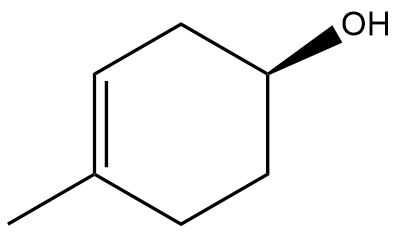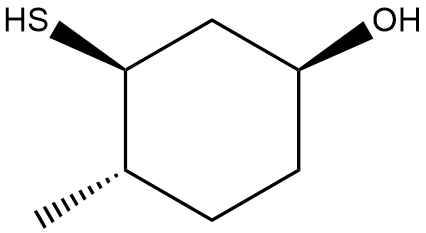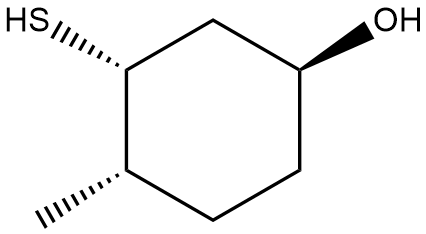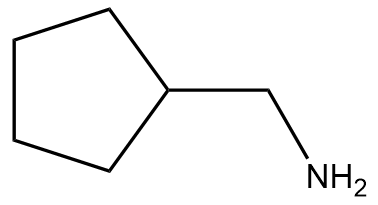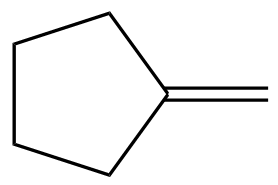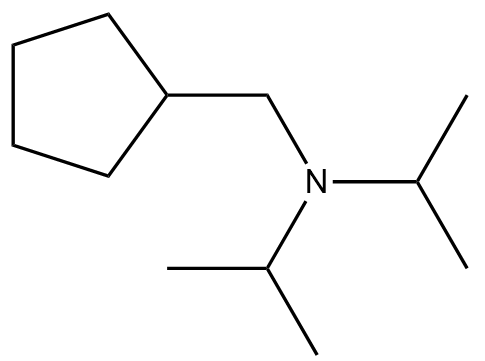All right, guys. So now we're literally going to put everything together and do some cumulative problems based on everything we've learned about these four mechanisms and the big daddy flow chart. Okay? So what that means is that for these questions, I'm not going to tell you what the mechanism is. You're expected to use the flow chart to figure that out. And then on top of that, you're expected to actually know what the mechanisms do based on my descriptions of those mechanisms. So if you're weak on that, you might want to brush up on it before you start. And then you have to predict all the products as well. So this is literally a huge amount of practice, but this is going to help you guys solidify this chapter so well. So let's go ahead and get started with problem number 1.
- 1. A Review of General Chemistry5h 5m
- Summary23m
- Intro to Organic Chemistry5m
- Atomic Structure16m
- Wave Function9m
- Molecular Orbitals17m
- Sigma and Pi Bonds9m
- Octet Rule12m
- Bonding Preferences12m
- Formal Charges6m
- Skeletal Structure14m
- Lewis Structure20m
- Condensed Structural Formula15m
- Degrees of Unsaturation15m
- Constitutional Isomers14m
- Resonance Structures46m
- Hybridization23m
- Molecular Geometry16m
- Electronegativity22m
- 2. Molecular Representations1h 14m
- 3. Acids and Bases2h 46m
- 4. Alkanes and Cycloalkanes4h 19m
- IUPAC Naming29m
- Alkyl Groups13m
- Naming Cycloalkanes10m
- Naming Bicyclic Compounds10m
- Naming Alkyl Halides7m
- Naming Alkenes3m
- Naming Alcohols8m
- Naming Amines15m
- Cis vs Trans21m
- Conformational Isomers13m
- Newman Projections14m
- Drawing Newman Projections16m
- Barrier To Rotation7m
- Ring Strain8m
- Axial vs Equatorial7m
- Cis vs Trans Conformations4m
- Equatorial Preference14m
- Chair Flip9m
- Calculating Energy Difference Between Chair Conformations17m
- A-Values17m
- Decalin7m
- 5. Chirality3h 39m
- Constitutional Isomers vs. Stereoisomers9m
- Chirality12m
- Test 1:Plane of Symmetry7m
- Test 2:Stereocenter Test17m
- R and S Configuration43m
- Enantiomers vs. Diastereomers13m
- Atropisomers9m
- Meso Compound12m
- Test 3:Disubstituted Cycloalkanes13m
- What is the Relationship Between Isomers?16m
- Fischer Projection10m
- R and S of Fischer Projections7m
- Optical Activity5m
- Enantiomeric Excess20m
- Calculations with Enantiomeric Percentages11m
- Non-Carbon Chiral Centers8m
- 6. Thermodynamics and Kinetics1h 22m
- 7. Substitution Reactions1h 48m
- 8. Elimination Reactions2h 30m
- 9. Alkenes and Alkynes2h 9m
- 10. Addition Reactions3h 18m
- Addition Reaction6m
- Markovnikov5m
- Hydrohalogenation6m
- Acid-Catalyzed Hydration17m
- Oxymercuration15m
- Hydroboration26m
- Hydrogenation6m
- Halogenation6m
- Halohydrin12m
- Carbene12m
- Epoxidation8m
- Epoxide Reactions9m
- Dihydroxylation8m
- Ozonolysis7m
- Ozonolysis Full Mechanism24m
- Oxidative Cleavage3m
- Alkyne Oxidative Cleavage6m
- Alkyne Hydrohalogenation3m
- Alkyne Halogenation2m
- Alkyne Hydration6m
- Alkyne Hydroboration2m
- 11. Radical Reactions1h 58m
- 12. Alcohols, Ethers, Epoxides and Thiols2h 42m
- Alcohol Nomenclature4m
- Naming Ethers6m
- Naming Epoxides18m
- Naming Thiols11m
- Alcohol Synthesis7m
- Leaving Group Conversions - Using HX11m
- Leaving Group Conversions - SOCl2 and PBr313m
- Leaving Group Conversions - Sulfonyl Chlorides7m
- Leaving Group Conversions Summary4m
- Williamson Ether Synthesis3m
- Making Ethers - Alkoxymercuration4m
- Making Ethers - Alcohol Condensation4m
- Making Ethers - Acid-Catalyzed Alkoxylation4m
- Making Ethers - Cumulative Practice10m
- Ether Cleavage8m
- Alcohol Protecting Groups3m
- t-Butyl Ether Protecting Groups5m
- Silyl Ether Protecting Groups10m
- Sharpless Epoxidation9m
- Thiol Reactions6m
- Sulfide Oxidation4m
- 13. Alcohols and Carbonyl Compounds2h 17m
- 14. Synthetic Techniques1h 26m
- 15. Analytical Techniques:IR, NMR, Mass Spect7h 3m
- Purpose of Analytical Techniques5m
- Infrared Spectroscopy16m
- Infrared Spectroscopy Table31m
- IR Spect:Drawing Spectra40m
- IR Spect:Extra Practice26m
- NMR Spectroscopy10m
- 1H NMR:Number of Signals26m
- 1H NMR:Q-Test26m
- 1H NMR:E/Z Diastereoisomerism8m
- H NMR Table24m
- 1H NMR:Spin-Splitting (N + 1) Rule22m
- 1H NMR:Spin-Splitting Simple Tree Diagrams11m
- 1H NMR:Spin-Splitting Complex Tree Diagrams12m
- 1H NMR:Spin-Splitting Patterns8m
- NMR Integration18m
- NMR Practice14m
- Carbon NMR4m
- Structure Determination without Mass Spect47m
- Mass Spectrometry12m
- Mass Spect:Fragmentation28m
- Mass Spect:Isotopes27m
- 16. Conjugated Systems6h 13m
- Conjugation Chemistry13m
- Stability of Conjugated Intermediates4m
- Allylic Halogenation12m
- Reactions at the Allylic Position39m
- Conjugated Hydrohalogenation (1,2 vs 1,4 addition)26m
- Diels-Alder Reaction9m
- Diels-Alder Forming Bridged Products11m
- Diels-Alder Retrosynthesis8m
- Molecular Orbital Theory9m
- Drawing Atomic Orbitals6m
- Drawing Molecular Orbitals17m
- HOMO LUMO4m
- Orbital Diagram:3-atoms- Allylic Ions13m
- Orbital Diagram:4-atoms- 1,3-butadiene11m
- Orbital Diagram:5-atoms- Allylic Ions10m
- Orbital Diagram:6-atoms- 1,3,5-hexatriene13m
- Orbital Diagram:Excited States4m
- Pericyclic Reaction10m
- Thermal Cycloaddition Reactions26m
- Photochemical Cycloaddition Reactions26m
- Thermal Electrocyclic Reactions14m
- Photochemical Electrocyclic Reactions10m
- Cumulative Electrocyclic Problems25m
- Sigmatropic Rearrangement17m
- Cope Rearrangement9m
- Claisen Rearrangement15m
- 17. Ultraviolet Spectroscopy51m
- 18. Aromaticity2h 34m
- 19. Reactions of Aromatics: EAS and Beyond5h 1m
- Electrophilic Aromatic Substitution9m
- Benzene Reactions11m
- EAS:Halogenation Mechanism6m
- EAS:Nitration Mechanism9m
- EAS:Friedel-Crafts Alkylation Mechanism6m
- EAS:Friedel-Crafts Acylation Mechanism5m
- EAS:Any Carbocation Mechanism7m
- Electron Withdrawing Groups22m
- EAS:Ortho vs. Para Positions4m
- Acylation of Aniline9m
- Limitations of Friedel-Crafts Alkyation19m
- Advantages of Friedel-Crafts Acylation6m
- Blocking Groups - Sulfonic Acid12m
- EAS:Synergistic and Competitive Groups13m
- Side-Chain Halogenation6m
- Side-Chain Oxidation4m
- Reactions at Benzylic Positions31m
- Birch Reduction10m
- EAS:Sequence Groups4m
- EAS:Retrosynthesis29m
- Diazo Replacement Reactions6m
- Diazo Sequence Groups5m
- Diazo Retrosynthesis13m
- Nucleophilic Aromatic Substitution28m
- Benzyne16m
- 20. Phenols55m
- 21. Aldehydes and Ketones: Nucleophilic Addition4h 56m
- Naming Aldehydes8m
- Naming Ketones7m
- Oxidizing and Reducing Agents9m
- Oxidation of Alcohols28m
- Ozonolysis7m
- DIBAL5m
- Alkyne Hydration9m
- Nucleophilic Addition8m
- Cyanohydrin11m
- Organometallics on Ketones19m
- Overview of Nucleophilic Addition of Solvents13m
- Hydrates6m
- Hemiacetal9m
- Acetal12m
- Acetal Protecting Group16m
- Thioacetal6m
- Imine vs Enamine15m
- Addition of Amine Derivatives5m
- Wolff Kishner Reduction7m
- Baeyer-Villiger Oxidation39m
- Acid Chloride to Ketone7m
- Nitrile to Ketone9m
- Wittig Reaction18m
- Ketone and Aldehyde Synthesis Reactions14m
- 22. Carboxylic Acid Derivatives: NAS2h 51m
- Carboxylic Acid Derivatives7m
- Naming Carboxylic Acids9m
- Diacid Nomenclature6m
- Naming Esters5m
- Naming Nitriles3m
- Acid Chloride Nomenclature5m
- Naming Anhydrides7m
- Naming Amides5m
- Nucleophilic Acyl Substitution18m
- Carboxylic Acid to Acid Chloride6m
- Fischer Esterification5m
- Acid-Catalyzed Ester Hydrolysis4m
- Saponification3m
- Transesterification5m
- Lactones, Lactams and Cyclization Reactions10m
- Carboxylation5m
- Decarboxylation Mechanism14m
- Review of Nitriles46m
- 23. The Chemistry of Thioesters, Phophate Ester and Phosphate Anhydrides1h 10m
- 24. Enolate Chemistry: Reactions at the Alpha-Carbon1h 53m
- Tautomerization9m
- Tautomers of Dicarbonyl Compounds6m
- Enolate4m
- Acid-Catalyzed Alpha-Halogentation4m
- Base-Catalyzed Alpha-Halogentation3m
- Haloform Reaction8m
- Hell-Volhard-Zelinski Reaction3m
- Overview of Alpha-Alkylations and Acylations5m
- Enolate Alkylation and Acylation12m
- Enamine Alkylation and Acylation16m
- Beta-Dicarbonyl Synthesis Pathway7m
- Acetoacetic Ester Synthesis13m
- Malonic Ester Synthesis15m
- 25. Condensation Chemistry2h 9m
- 26. Amines1h 43m
- 27. Heterocycles2h 0m
- Nomenclature of Heterocycles15m
- Acid-Base Properties of Nitrogen Heterocycles10m
- Reactions of Pyrrole, Furan, and Thiophene13m
- Directing Effects in Substituted Pyrroles, Furans, and Thiophenes16m
- Addition Reactions of Furan8m
- EAS Reactions of Pyridine17m
- SNAr Reactions of Pyridine18m
- Side-Chain Reactions of Substituted Pyridines20m
- 28. Carbohydrates5h 53m
- Monosaccharide20m
- Monosaccharides - D and L Isomerism9m
- Monosaccharides - Drawing Fischer Projections18m
- Monosaccharides - Common Structures6m
- Monosaccharides - Forming Cyclic Hemiacetals12m
- Monosaccharides - Cyclization18m
- Monosaccharides - Haworth Projections13m
- Mutarotation11m
- Epimerization9m
- Monosaccharides - Aldose-Ketose Rearrangement8m
- Monosaccharides - Alkylation10m
- Monosaccharides - Acylation7m
- Glycoside6m
- Monosaccharides - N-Glycosides18m
- Monosaccharides - Reduction (Alditols)12m
- Monosaccharides - Weak Oxidation (Aldonic Acid)7m
- Reducing Sugars23m
- Monosaccharides - Strong Oxidation (Aldaric Acid)11m
- Monosaccharides - Oxidative Cleavage27m
- Monosaccharides - Osazones10m
- Monosaccharides - Kiliani-Fischer23m
- Monosaccharides - Wohl Degradation12m
- Monosaccharides - Ruff Degradation12m
- Disaccharide30m
- Polysaccharide11m
- 29. Amino Acids3h 20m
- Proteins and Amino Acids19m
- L and D Amino Acids14m
- Polar Amino Acids14m
- Amino Acid Chart18m
- Acid-Base Properties of Amino Acids33m
- Isoelectric Point14m
- Amino Acid Synthesis: HVZ Method12m
- Synthesis of Amino Acids: Acetamidomalonic Ester Synthesis16m
- Synthesis of Amino Acids: N-Phthalimidomalonic Ester Synthesis13m
- Synthesis of Amino Acids: Strecker Synthesis13m
- Reactions of Amino Acids: Esterification7m
- Reactions of Amino Acids: Acylation3m
- Reactions of Amino Acids: Hydrogenolysis6m
- Reactions of Amino Acids: Ninhydrin Test11m
- 30. Peptides and Proteins2h 42m
- Peptides12m
- Primary Protein Structure4m
- Secondary Protein Structure17m
- Tertiary Protein Structure11m
- Disulfide Bonds17m
- Quaternary Protein Structure10m
- Summary of Protein Structure7m
- Intro to Peptide Sequencing2m
- Peptide Sequencing: Partial Hydrolysis25m
- Peptide Sequencing: Partial Hydrolysis with Cyanogen Bromide7m
- Peptide Sequencing: Edman Degradation28m
- Merrifield Solid-Phase Peptide Synthesis18m
- 32. Lipids 2h 50m
- 34. Nucleic Acids1h 32m
- 35. Transition Metals5h 33m
- Electron Configuration of Elements45m
- Coordination Complexes20m
- Ligands24m
- Electron Counting10m
- The 18 and 16 Electron Rule13m
- Cross-Coupling General Reactions40m
- Heck Reaction40m
- Stille Reaction13m
- Suzuki Reaction25m
- Sonogashira Coupling Reaction17m
- Fukuyama Coupling Reaction15m
- Kumada Coupling Reaction13m
- Negishi Coupling Reaction16m
- Buchwald-Hartwig Amination Reaction19m
- Eglinton Reaction17m
- 36. Synthetic Polymers1h 49m
- Introduction to Polymers6m
- Chain-Growth Polymers10m
- Radical Polymerization15m
- Cationic Polymerization8m
- Anionic Polymerization8m
- Polymer Stereochemistry3m
- Ziegler-Natta Polymerization4m
- Copolymers6m
- Step-Growth Polymers11m
- Step-Growth Polymers: Urethane6m
- Step-Growth Polymers: Polyurethane Mechanism10m
- Step-Growth Polymers: Epoxy Resin8m
- Polymers Structure and Properties8m
Cumulative Substitution/Elimination - Online Tutor, Practice Problems & Exam Prep
 Created using AI
Created using AIIn this section, students will apply their understanding of various mechanisms, including nucleophilic acyl substitution and electrophilic additions, to solve cumulative problems. Utilizing a flow chart, they will identify mechanisms and predict products, reinforcing concepts like Markovnikov's rule and anti addition. Mastery of these topics, such as the role of leaving groups and the significance of stereochemistry, is crucial for success in organic synthesis and reaction mechanisms. This practice will solidify knowledge and enhance problem-solving skills in organic chemistry.
Time to test yourself on what we've learned thus far. You are on your own here. We will be predicting mechanisms so keep the flowchart handy. Good luck!
Intro to Substitution/Elimination Problems
Video transcript
Time for some practice questions. Have a game plan ready and take it step by step. I believe in you all! Let's begin.
Predict the mechanism for the following reactions. Provide the full mechanism and draw the final product.

Predict the mechanism for the following reactions. Provide the full mechanism and draw the final product.

No reaction.
Predict the mechanism for the following reactions. Provide the full mechanism and draw the final product.
No reaction.
What is the major product for reaction d ?

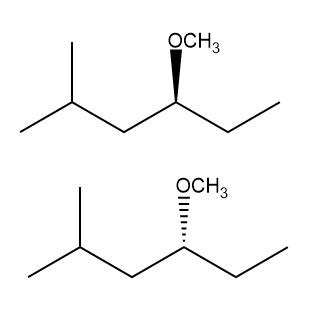
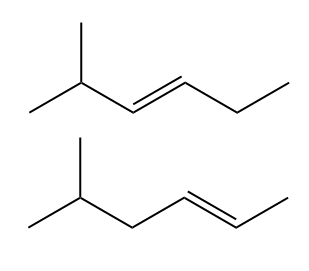
Predict the mechanism for the following reactions. Provide the full mechanism and draw the final product.
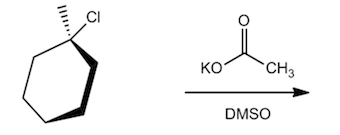
Problem Transcript
Predict the mechanism for the following reactions. Provide the full mechanism and draw the final product.

Problem Transcript
Good job! Way to stick with it.
Do you want more practice?
More setsHere’s what students ask on this topic:
What is the role of a leaving group in nucleophilic substitution reactions?
The leaving group in nucleophilic substitution reactions is crucial because it must be able to stabilize the negative charge it acquires after departure. A good leaving group is typically a weak base, as weak bases are more stable with a negative charge. Common leaving groups include halides (Cl−, Br−, I−) and sulfonate esters (e.g., tosylate, TsO−). The ability of the leaving group to depart efficiently affects the reaction rate and mechanism (SN1 or SN2). In SN1 reactions, the leaving group departure is the rate-determining step, while in SN2 reactions, the leaving group leaves simultaneously as the nucleophile attacks.
 Created using AI
Created using AIHow does Markovnikov's rule apply to electrophilic addition reactions?
Markovnikov's rule states that in the addition of HX (where X is a halogen) to an alkene, the hydrogen atom will attach to the carbon with the greater number of hydrogen atoms (the less substituted carbon), while the halogen will attach to the carbon with fewer hydrogen atoms (the more substituted carbon). This occurs because the more stable carbocation intermediate forms during the reaction. For example, in the addition of HBr to propene, the hydrogen attaches to the CH2 group, and the bromine attaches to the CH group, resulting in 2-bromopropane as the major product.
 Created using AI
Created using AIWhat is the significance of stereochemistry in elimination reactions?
Stereochemistry is significant in elimination reactions, particularly in E2 mechanisms, where the anti-periplanar geometry is required. This means that the hydrogen atom being removed and the leaving group must be on opposite sides of the molecule. This arrangement allows for the proper orbital alignment necessary for the reaction to proceed. In cyclic systems, this requirement can lead to specific stereoisomers as products. For example, in the elimination of HBr from 2-bromobutane, the anti-periplanar requirement can lead to the formation of trans-2-butene as the major product.
 Created using AI
Created using AIHow do you use a flow chart to determine the mechanism of a reaction?
A flow chart helps determine the mechanism of a reaction by guiding you through a series of questions based on the reactants and conditions. Typically, you start by identifying the type of substrate (primary, secondary, tertiary) and the nature of the nucleophile or base (strong/weak, bulky/non-bulky). The flow chart will then direct you to consider factors such as the solvent (protic or aprotic) and temperature. By following these steps, you can narrow down whether the reaction proceeds via SN1, SN2, E1, or E2 mechanisms. For example, a tertiary substrate with a strong base in a protic solvent likely undergoes an E2 elimination.
 Created using AI
Created using AIWhat are the key differences between SN1 and SN2 mechanisms?
The key differences between SN1 and SN2 mechanisms lie in their kinetics, stereochemistry, and conditions. SN1 reactions are unimolecular and involve a two-step process: formation of a carbocation intermediate followed by nucleophilic attack. They exhibit first-order kinetics and often lead to racemization due to the planar nature of the carbocation. SN2 reactions are bimolecular and occur in a single step where the nucleophile attacks the substrate simultaneously as the leaving group departs. They exhibit second-order kinetics and result in inversion of configuration at the carbon center. SN1 is favored by tertiary substrates and polar protic solvents, while SN2 is favored by primary substrates and polar aprotic solvents.
 Created using AI
Created using AIYour Organic Chemistry tutors
- What halides would undergo E2 dehydrohalogenation to give the following pure alkenes? a. Hex-1-ene b. Isobu...
- When the following compound is treated with sodium methoxide in methanol, two elimination products are possibl...
- Protonation converts the hydroxy group of an alcohol to a good leaving group. Suggest a mechanism for each rea...
- Draw the products of the following intramolecular reactions: a. b.
- After a proton is removed from the OH group, which compound in each pair forms a cyclic ether more rapidly? a...
- cis-4-Bromocyclohexanol and trans-4-bromocyclohexanol form the same elimination product but a different substi...
- Explain how each of the following changes affect the rate of the reaction of 1-bromobutane with ethoxide ion i...
- Explain how the following changes affect the rate of the reaction of 2-bromo-2-methylbutane with methanol: a....
- (••••) The following substitution reaction, between a strong base and a 1° haloalkane, occurs in a single step...
- Propose a mechanism for each of the following reactions: a.
- Which of the following two compounds eliminates HBr more rapidly in a basic solution?
- Propose a mechanism for the following reaction. (Hint: The rate of the reaction is much slower if the nitrogen...
- Show a mechanism for the following elimination reactions. Label the mechanism as E1 or E2.(d) <IMAGE>
- Paying close attention to the stereochemical outcome, predict the product of these elimination reactions.(d) ...
- (••) Predict the product(s) that would result when molecules (a)–(p) are allowed to react under the following ...
- (••) Predict the product(s) that would result when molecules (a)–(p) are allowed to react under the following ...
- (••) Predict the product(s) that would result when molecules (a)–(p) are allowed to react under the following ...
- (••) Predict the product(s) that would result when molecules (a)–(p) are allowed to react under the following ...
- (••) Predict the product(s) that would result when molecules (a)–(p) are allowed to react under the following ...
- (••) Predict the product(s) that would result when molecules (a)–(p) are allowed to react under the following ...
- (••) Predict the product(s) that would result when molecules (a)–(p) are allowed to react under the following ...
- (••) Predict the product(s) that would result when molecules (a)–(p) are allowed to react under the following ...
- (•••) Predict the product(s) of the following substitution or elimination reactions, paying close attention to...
- (•••) Predict the product(s) of the following substitution or elimination reactions, paying close attention to...
- (•••) Predict the product(s) of the following substitution or elimination reactions, paying close attention to...
- Show a mechanism for the following elimination reactions. Label the mechanism as E1 or E2.(c) <IMAGE>
- Would you expect the following bases to favor E1 or E2 elimination?(d) <IMAGE>
- Paying close attention to the stereochemical outcome, predict the product of these elimination reactions.(c) &...
- Indicate the type of catalysis that is occurring in the slow step in each of the following reaction sequences:...
- Indicate the type of catalysis that is occurring in the slow step in each of the following reaction sequences:...
- Why is melphalan a good cancer drug?
- Indicate which species in each pair gives a higher substitution-product-to-elimination-product ratio when it r...
- The following three nitrogen mustards were studied for possible clinical use. One is now used clinically, one ...
- Finish [SOLVED Problem 7-3] <IMAGE> by showing how the rearranged carbocations give the four products sh...
- Give the substitution and elimination products you would expect from the following reactions.c. 1-bromo-2-meth...
- Make models of the following compounds, and predict the products formed when they react with the strong bases ...
- Deuterium (D) is the isotope of hydrogen of mass number 2, with a proton and a neutron in its nucleus. The che...
- Show how you would prepare cyclopentene from each compound.a. cyclopentanolb. cyclopentyl bromide
- Show how this 1° alcohol can be made from the following:<IMAGE>(a) a 1° alkyl bromide
- SN1 substitution and E1 elimination frequently compete in the same reaction.Propose a mechanism and predict th...
- (•••) Suggest a bromoalkane and the conditions necessary to produce the alkenes shown. (a)
- Why is the S_N 1 reaction shown an inefficient way of synthesizing ethers?<IMAGE>
